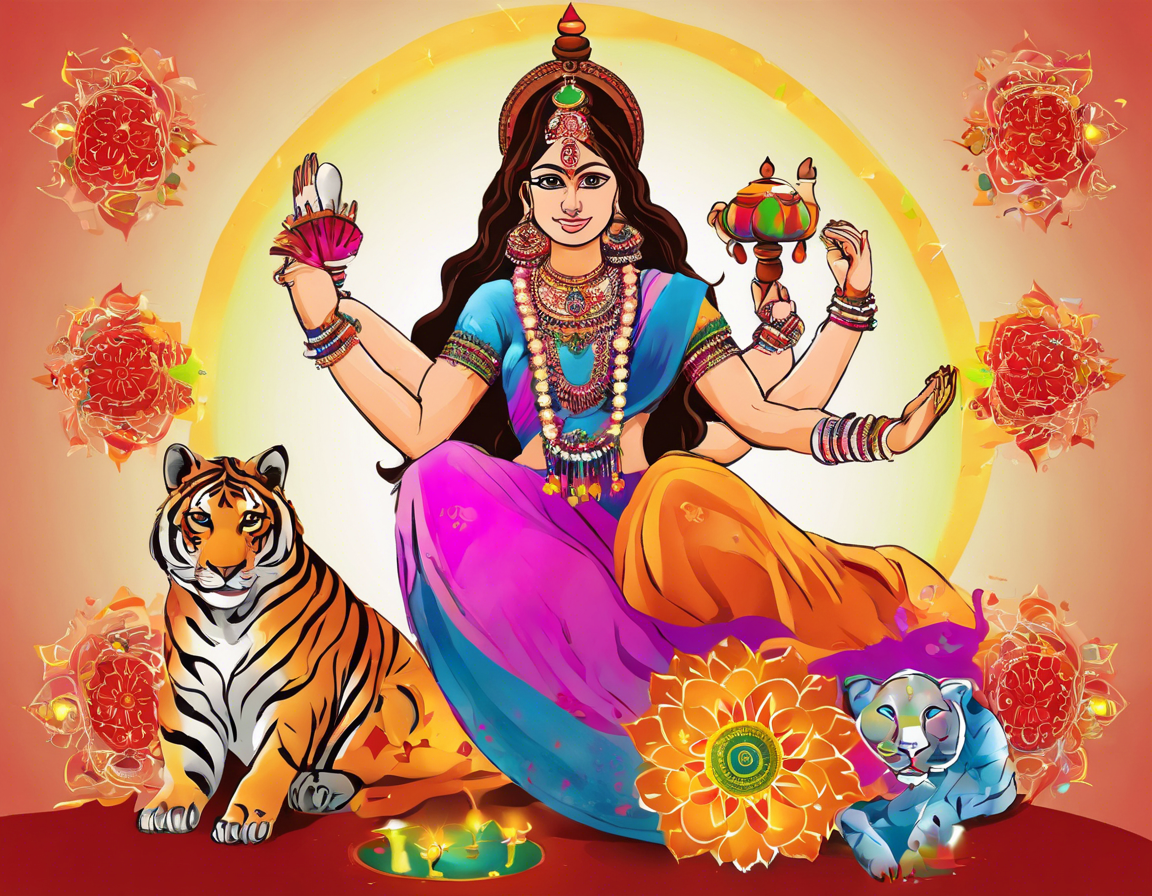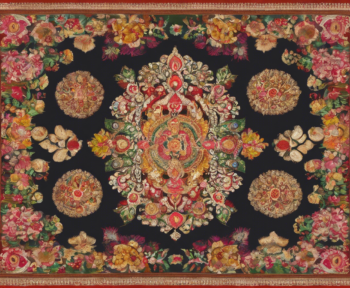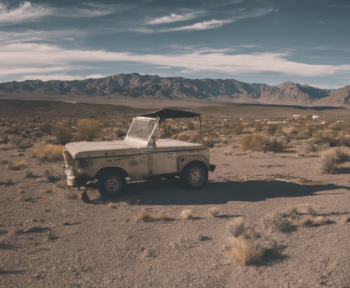Navratri, a vibrant nine-night festival celebrated across India, holds immense cultural and religious significance. Each day of this auspicious occasion is associated with a specific color that devotees traditionally wear while participating in festivities, dances, and rituals. These Navratri color trends not only represent different aspects of life but also add a splash of beauty and energy to the festivities. As we look forward to the Navratri celebrations in 2023, let’s delve into the unveiled color trends for each day of this colorful festival.
Significance of Navratri Colors:
Navratri is celebrated in honor of the Hindu goddess Durga, who is believed to have defeated the demon Mahishasura after a fierce battle that lasted nine nights. Each day of Navratri is dedicated to a different form of the goddess, and the colors associated with these days hold symbolic importance.
Day 1 – Grey:
- Color Meaning: Grey symbolizes the calm before the storm, signifying the beginning of a powerful and transformative journey.
- Traditional Attire: Devotees often wear grey outfits on the first day of Navratri to invoke the goddess’s strength and protection.
Day 2 – Orange:
- Color Meaning: Orange represents energy and happiness, symbolizing the vibrancy and warmth that permeate the festival.
- Traditional Attire: Wearing orange attire on the second day is believed to bring joy and positivity into one’s life.
Day 3 – White:
- Color Meaning: White signifies purity and peace, reflecting the goddess’s benevolent and serene nature.
- Traditional Attire: People wear white clothes on the third day to seek inner purification and spiritual enlightenment.
Day 4 – Red:
- Color Meaning: Red symbolizes power and courage, embodying the fierce and protective aspect of the goddess.
- Traditional Attire: Red outfits are worn on the fourth day to invoke strength and passion in one’s endeavors.
Day 5 – Royal Blue:
- Color Meaning: Royal blue represents wisdom and truth, signifying the goddess’s divine knowledge and guidance.
- Traditional Attire: Wearing royal blue on the fifth day is thought to bring clarity of thought and spiritual insight.
Day 6 – Yellow:
- Color Meaning: Yellow symbolizes joy and positivity, reflecting the festive spirit and celebratory mood of Navratri.
- Traditional Attire: Yellow attire is worn on the sixth day to enhance happiness and prosperity.
Day 7 – Green:
- Color Meaning: Green signifies growth and harmony, embodying the goddess’s nurturing and compassionate essence.
- Traditional Attire: Dressing in green on the seventh day is believed to symbolize renewal and abundance in life.
Day 8 – Peacock Green:
- Color Meaning: Peacock green symbolizes beauty and grace, reflecting the elegance and allure of the goddess.
- Traditional Attire: Wearing peacock green on the eighth day is considered auspicious for attracting beauty and positivity.
Day 9 – Purple:
- Color Meaning: Purple represents luxury and spirituality, symbolizing the goddess’s divine presence and blessings.
- Traditional Attire: Purple outfits on the ninth day are believed to invoke spiritual awareness and divine protection.
Navratri Color Trends for 2023:
As Navratri approaches in 2023, it’s exciting to anticipate the popular color trends that will dominate this year’s celebrations. While the traditional significance of Navratri colors remains unchanged, contemporary fashion trends often influence the choice of hues and styles. Here are the predicted Navratri color trends for 2023:
Bold and Vibrant Shades:
Expect to see a resurgence of bold and vibrant colors during Navratri 2023. Shades like electric blue, fuchsia pink, and emerald green are likely to feature prominently in festive attire, adding a modern twist to traditional celebrations.
Metallic Accents:
Incorporating metallic accents in Navratri outfits is expected to be a popular trend in 2023. Gold, silver, and copper embellishments on fabrics and accessories can elevate the festive look and add a touch of glamour to the celebrations.
Pastel Hues:
Pastel colors have been gaining popularity in festive wear, and Navratri 2023 is likely to see an influx of soft tones like lilac, mint green, and blush pink. These soothing hues offer a refreshing contrast to the traditional bright colors associated with the festival.
Fusion Fashion:
Fusing traditional attire with contemporary styles is a growing trend, especially among the younger generation. Navratri 2023 may witness a blend of ethnic silhouettes with modern cuts, unconventional color combinations, and innovative designs that reflect individuality and creativity.
Sustainable Fashion Choices:
With an increasing focus on sustainability and eco-consciousness, Navratri celebrants are expected to opt for eco-friendly and organic fabrics in 2023. From handloom textiles to recycled materials, sustainable fashion choices will make a statement during the festival.
Regional Influences:
Navratri celebrations vary across regions in India, each showcasing its unique cultural heritage. In 2023, expect to see a fusion of traditional regional textiles, motifs, and embellishments incorporated into Navratri outfits, adding a touch of diversity and richness to the colorful festivities.
FAQs (Frequently Asked Questions):
1. Can I wear a different color on each day of Navratri?
Yes, you can choose to wear different colors on each day of Navratri according to your preferences and beliefs. While the traditional colors hold significance, there is no strict rule dictating the color of attire for each day.
2. Are there specific accessories associated with Navratri colors?
While there are no strict rules regarding accessories, you can opt for jewelry, scarves, or footwear in colors that complement your Navratri attire. Gold, silver, and gemstone accessories are popular choices during the festival.
3. What if I don’t have the specified color for a particular day of Navratri?
If you don’t have the designated color for a specific day, you can choose a close alternative or incorporate accents of that color into your outfit through accessories or embellishments. The intention behind wearing the colors is more important than strict adherence to the traditional hues.
4. How can I incorporate Navratri colors into my home decor?
You can infuse Navratri colors into your home decor by using color-coordinated textiles, cushions, curtains, and floral arrangements. Lighting fixtures, rangoli designs, and wall art in the designated colors can also create a festive ambiance during Navratri.
5. Do men also follow the Navratri color trends for attire?
While Navratri color trends are traditionally associated with women’s attire, men can also participate in the festivities by incorporating the designated colors into their outfits. Men can choose colored kurtas, shirts, or accessories to align with the spirit of Navratri.
Navratri is a time of joy, devotion, and cultural fervor, and the vibrant colors associated with each day add to the celebratory atmosphere. Whether you adhere to traditional color trends or embrace contemporary interpretations, Navratri in 2023 promises to be a kaleidoscope of hues and styles that reflect the richness of Indian culture and heritage. Embrace the colors, revel in the festivities, and immerse yourself in the magic of Navratri!



